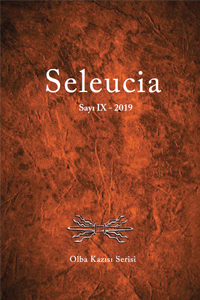Building-in Time: Th e Complicated Lives of Roman Civic Structures in Asia Minor
Building-in Time: Th e Complicated Lives of Roman Civic Structures in Asia Minor
Th e cities of Roman Asia Minor are known for impressive public buildings. Scholarship has frequently focused on an imagined fi nal state for such structures, yet as enduring, costly undertakings these architectural projects lived complicated lives. Th ey evolved from original creation through repairs, alterations, reuse, destruction, rebuilding, decay, and demolition over many years. Multiple acts of building in prominent locations disrupted urban activities, blocking traffi c while generating noise and dust. Simultaneously, bustling construction sites and in-progress structures entertained the populace and continuously affi rmed Roman cultural values.
Keywords:
Construction, Asia Minor, Architectural drawings, Process Building time.,
___
- Barker 2010 Barker, S., “Roman builders - pillagers or salvagers? Th e economics of deconstruction and reuse”, in Arqueología de la construcción: II, Los procesos constructivos en el mundo romano: Italia y provincias occidentales, S. Camporeale, H. Dessales and A. Pizzo, eds. (Madrid), 127-142.
- Brand 1994 Brand, S., How buildings learn: what happens after they’re built, New York.
- Burns 2017 Burns, R., Origins of the Colonnaded Streets in the Cities of the Roman East, Oxford.
- Capelle 2017 Capelle, J., “Les épures du théâtre de Milet: pratiques de chantiers antiques”, Bulletin de correspondance hellénique, École française d’Athènes, 141(2), 769-820.
- ISSN: 2148-4120
- Başlangıç: 2011
- Yayıncı: Bilgin Kültür Sanat Yayınevi
